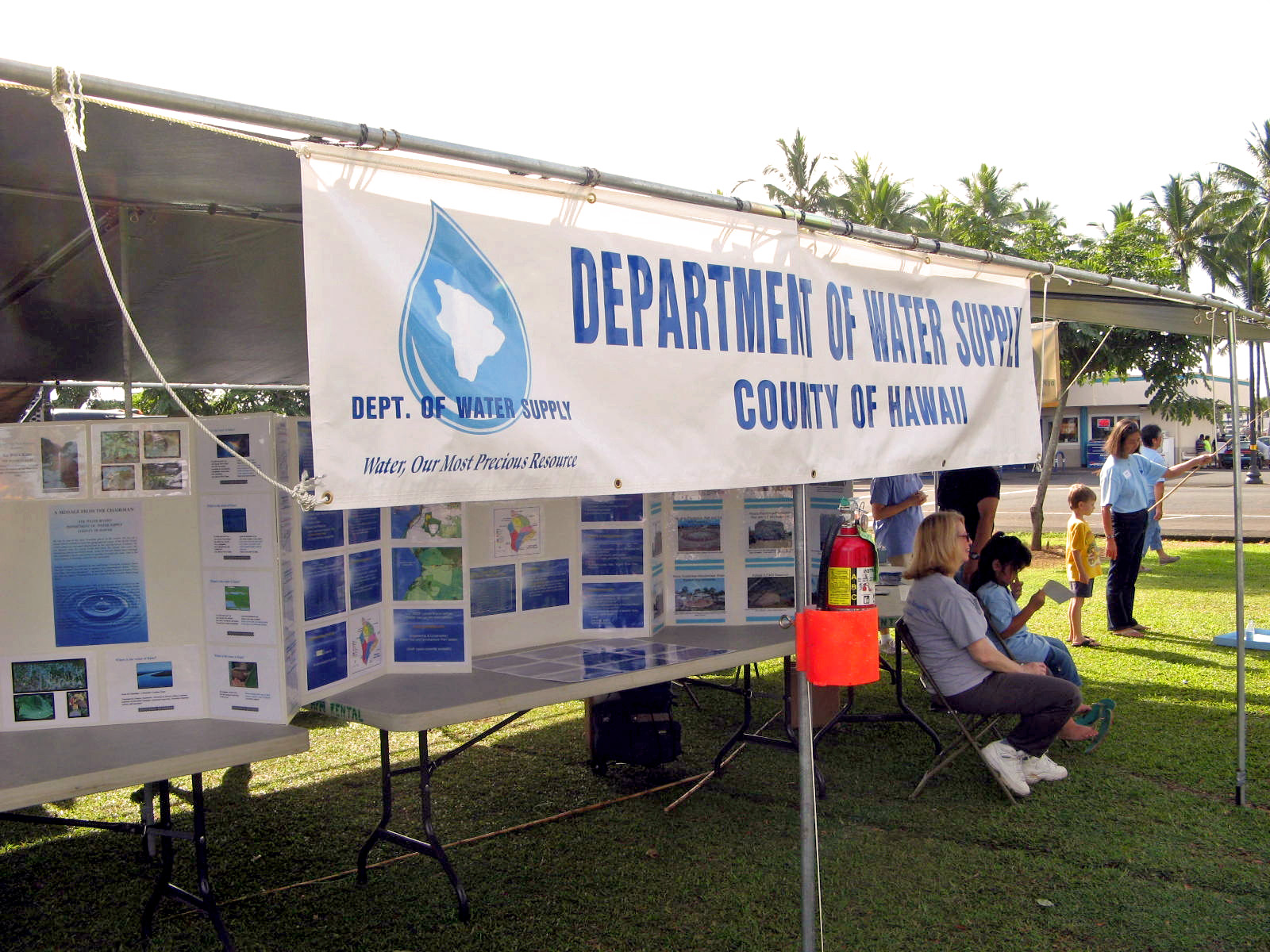Did you know that the County of Hawai‘i’s Department of Water Supply (DWS) uses more electricity than anyone else on the island? It’s expensive to move water around to where it’s needed. The Department’s electricity bill for last year alone was $20 million.
So it’s especially fitting that the DWS participated at the recent E Malama ‘Aina sustainability festival.

It was Board Chairman Tommy Goya of the county’s Board of Water Supply (the department’s policy-making entity) who wanted to be sure they were at the festival, according to DWS Public Information and Education Officer Kanani Aton.
(Richard says Tommy Goya’s “behind the scenes” advice, while Richard was helping to coordinate the festival, was invaluable, too.
“I would call Tommy and ask: ‘What you think, Tommy?’ I had never been involved in that kind of event before,” says Richard. “And he would say, ‘Meet me at Starbucks.’ He would give alternative
scenarios, how things were done before and what might be appropriate now. This helped a lot.”)
“Tommy wanted to do it big,” says Kanani. “He really wanted to make an impact at this sustainability festival because of the message the festival was sending. And because the need for water is a part of sustainability, and to help attitudes toward water deepen and become more appreciative.”
Indeed, the DWS made a splash with their huge booth, where their displays were powered by the solar power guys also exhibiting at the festival.
The DWS folks even brought their own water buffalo. “That’s our big, potable water tank,” says Kanani (though don’t you wish it had been a real water buffalo?) “We brought our water and served it right there at the festival.”
Another highlight – one of their workers had taken a donated fish tank, and working with the building maintenance crew he created a model “water cycle and water system.”
“They created a cover for the tank, and pumped water up from below the rocks, up into the sky so to speak,” Kanani explains. “By putting dry ice in the top to look like clouds, it was raining over the land, the rocks. Then, after he created the simple model of a water cycle, he overlaid an example of a water system, how you have this pump that pulls water up from the aquifer and eventually to the house.”
She says that kids loved seeing that. “They love the dry ice making the clouds,” she says. “They understand that when they turn on the faucet, they’re actually calling water to come down the hill. Whenever you turn on a faucet to wash Daddy’s car, you’re actually telling a pump far away to eventually turn on.”
It’s a way to teach children not to take water for granted, or think it is limitless. Other kids’ activities included a ball toss, a fishing pole game. They gave away coloring books, balloon art, pens and stickers.
The DWS displayed its energy management activities, engineering capital improvement projects, water use and development plan.
“We also showed how we’re changing out all the mechanical water meters to be automatic meters that send out electronic signals,” says Kanani.
The DWS has recently adopted as its new motto Ka Wai A Kane, which, she explains, is a Hawaiian chant from the days of antiquity.
“It’s a chant about the waters, the fresh water, of the Hawaiian god Kane,” she says. “All the different manifestations of fresh water, whether it be the cloud banks that gather on the sea, the high ridges, the valleys, the flowing streams, even the water below the Earth.”
“Those ancient words,” she says, “speak about what our water engineers and hydrologists and operations engineers do today – look at the water and how to harness it effectively.”
“Water is our most precious resource,” she says, “and the Department of Water Supply really has its eye on the ball when it comes to water. We need to reach out to each and every person who uses water and create a strong relationship of stewardship.”

